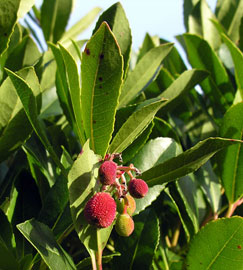 Arbutus unedo(Strawberry Tree)
Arbutus unedo(Strawberry Tree)
This was quite cold day after a very unrelentingly cold winter. The plants were late in the garden, hardly any daffodils were showing even on March 1st.
This trip to the Great Orme was without any great expectation of plants in flower since everything seems to be weeks later than usual.
In spite of the cold some flowering plants were just about showing including Viola odorata (Sweet Violet) with its blunt sepals and kidney shaped leaves which is always the earliest violet to show.
I had hoped to find two plants which flower early here namely Scrophularia vernalis and Hornungia petraea (Hutchinsia) but no luck with either.
The Great Orme has a number of introduced as well as native species one of which is Arbutus unedo. The Strawberry Tree is though to be native only from Ireland but here it has spread and there are a quite a number of young trees growing in various places on the Orme which display the flowers in summer and the delicious looking "Strawberry" fruits in Spring.
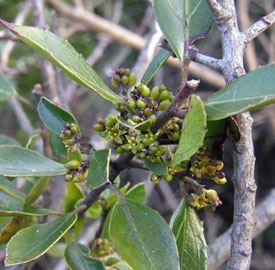 Rhamnus alaternus(Mediterranean Buckthorn)
Rhamnus alaternus(Mediterranean Buckthorn)
Another fairly common introduced species is Rhamnus alaternus (Mediterranean Buckthorn). This is a very early flowering species with small greenish flowers appearing as early as February in some years.
Amongst the native plants you would expect to see at this time of year three are are usually so early flowering that even in a late year like Spring 2006 there should be some trace.
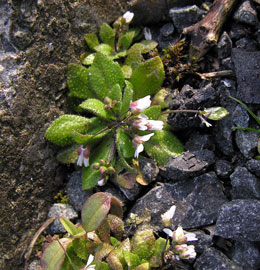 Erophila verna(Common Whitlowgrass)
Erophila verna(Common Whitlowgrass)
The Common Whitlowgrass which is now split into three species (hard to separate without the Plant Crib) , Mercurialis perennis (Dog's-mercury) and Saxifraga tridactylites (Rue-leaved Saxifrage) all flower very much earlier than most Spring plants.
The annual Erophila verna is a bit variable in its flowering time but on the Orme can usually be found in flower in March.
Mercurialis perennis (Dog'-mercury) is one of those perennials which will take advantage of a warm winter and I have found it in flower as early as November in Cheshire.
Saxifrage tridactylites (Rue-leaved Saxifrage) as its name suggests, prefers rocky habitats and a good place to look for it is on dry stone walls in limestone stony places. Here on the Orme it grows various rocky substrates like scree or walls and will typically produce one apical flower quite early in the season.
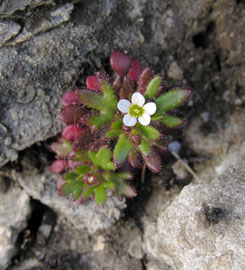 Saxifraga tridactylities(Rue-leaved Saxifrage)
Saxifraga tridactylities(Rue-leaved Saxifrage)
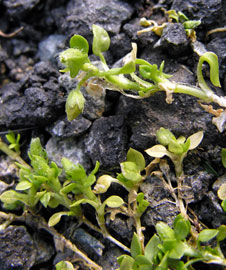 Stellaria pallida(Lesser Chickweed)
Stellaria pallida(Lesser Chickweed)
Another early but very insignificant plant is Stellaria pallida (Lesser Chickweed). It isn't any use looking for flowers on this plant because it rarely produces anything with petals.
The earliest violet which I find in flower is nearly always Viola odorata (Sweet Violet)
although in wooded areas the Viola reichenbachiana (Early Dog-violet) can be very close behind. The Sweet Violet can be White, Blue, Mauve and all sorts of shades around those colours.
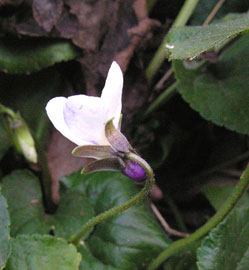
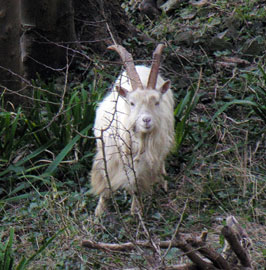 Wild Goat
Wild Goat
Here on the Orme the flowers tend to be white with the usual blunt sepals and more or less kidney shaped leaves which make it distinctly different from the other common violets and easy to identify.
I rarely visit the Orme without seeing one of the many wild goats which roam amongst the rocks and hills. They seem to like the foliage of Iris foetidus (Stinking Iris) which is common here and every single plant I saw had the tops chewed off. They are quite shy and move off quickly if you look at them so this is a zoom photo of one about to disappear into the undergrowth.